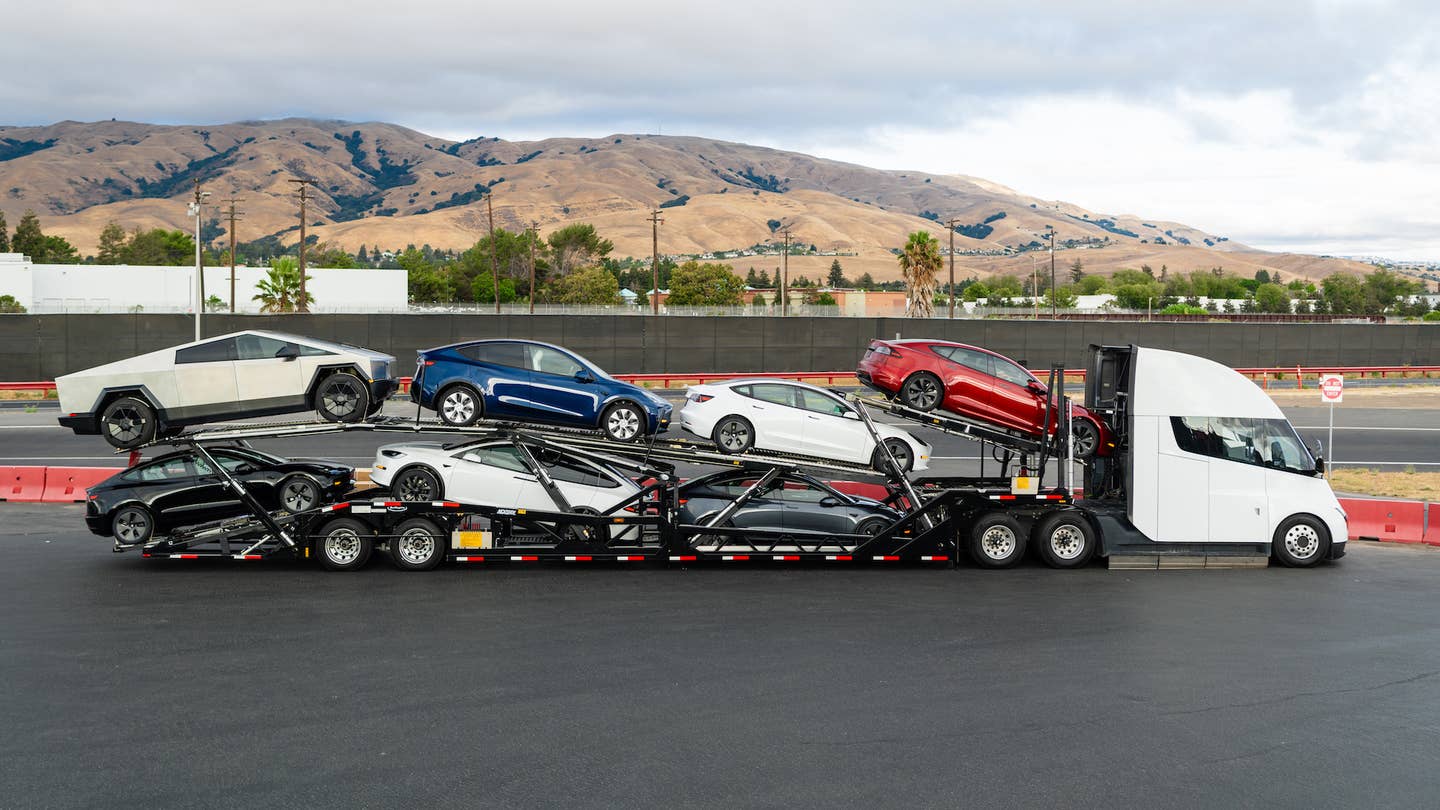A significant portion of Tesla’s 2023 profits came directly from legacy automakers paying to avoid emissions fines.

Tesla’s income from zero-emissions vehicle regulatory credits was disclosed in its Form 10-K for calendar year 2023, where it reported $17.66 billion in gross profit. $1.79B came from said credits, up from $1.776B in 2022, and further from $1.465B in 2021. That means credit sales make up more than 10 percent of Tesla‘s gross profit, and potentially a larger proportion of its $14.974B in net income. Over the years, Tesla’s revenue from this source has totalen $9B according to Transport Topics.
Teslas on a mountain road. Tesla
ZEV regulatory credit sales depend on other automakers remaining behind the curve on electrification. Several states distribute these credits for selling cars without tailpipe emissions, which negate penalties accrued for selling internally combusting vehicles. They’re transferable though, so because Tesla sells only EVs, it gets plenty of credits to offload to automakers that don’t sell enough EVs. They still cost the credit-purchasing company money, but less than it’d cost to pay emissions fines.
Historically, one of Tesla’s major customers has been Fiat Chrysler Automobiles (now Stellantis), whose credit purchases financed Tesla’s Berlin factory. Stellantis is behind on introducing modern EVs in the U.S. market, and in recent years has thrived on inefficient, but highly profitable models from Dodge, Jeep, and Ram. But some of those models are now discontinued or selling more slowly, and Stellantis is readying flagship EVs for every one of its American brands. Eventually, it won’t need to buy Tesla’s credits, and that could add to the growing pressure on Tesla’s bottom line.
Tesla lineup at a Supercharger station. Tesla
While Tesla would still have been profitable without credit sales in 2023, their importance to Tesla’s finances is demonstrated by attempts to hide their role reported by Bloomberg Tax—incensing investors. Sans credit sales, Tesla’s profit margins may fall further than they did in 2023, when they tumbled to 18.2 percent after exceeding 25 the previous two years.
Profitability is of increasing concern to investors in light of large price cuts to Tesla’s lineup throughout the last year. With the exception of the newly introduced Cybertruck (whose availability is limited), Tesla’s lineup is aging and new products such as the Roadster and long-teased $25,000 model haven’t materialized. Even if they do arrive, the market for the $250,000 Roadster is small, and economy cars’ margins are inherently slim.
Got a tip or question for the author? You can reach them here: james@thedrive.com


